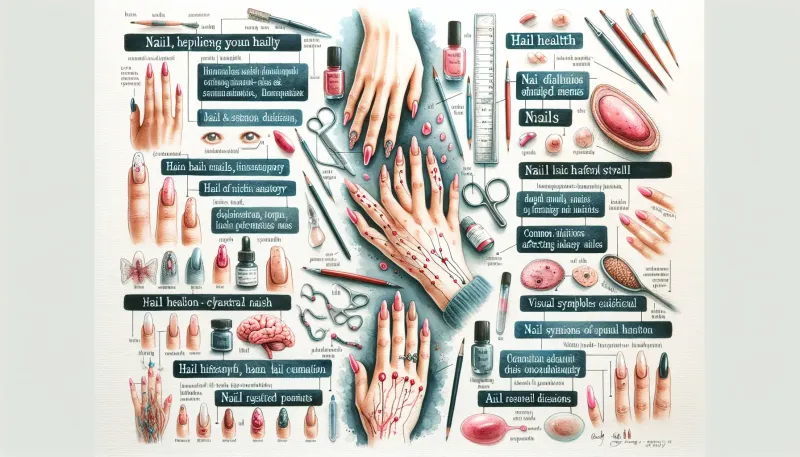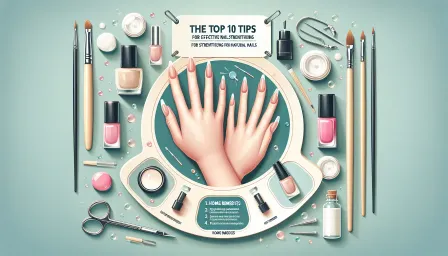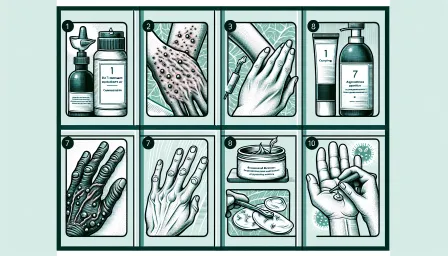Understanding Nail Health and Medical Conditions: A Comprehensive Guide

A comprehensive guide to understanding nail health and medical conditions, offering expert insights into common nail issues and their solutions.
Nail health is a window into our overall well-being, yet it is often overlooked. This comprehensive guide delves into understanding the nuances of nail health and medical conditions associated with it. By recognizing the signs and addressing them promptly, you can maintain healthier nails and overall health.
Introduction to Nail Health
Nails are composed of layers of a protein called keratin, which is also found in hair and skin. Healthy nails are typically smooth, uniform in color, and free of spots, pits, and lines. Changes in nail appearance can indicate underlying health issues ranging from nutritional deficiencies to systemic diseases.
Common Nail Health Issues
Brittle Nails
Brittle nails are characterized by peeling, chipping, or breaking easily. This condition can be caused by frequent wetting and drying of the nails, exposure to harsh chemicals, or deficiencies in vitamins and minerals such as iron, calcium, and biotin.
Nail Discoloration
Nail discoloration may present itself in various forms, such as yellow, green, or black nails. Yellow nails commonly indicate fungal infections, while green nails can be a sign of bacterial infection. Black discoloration may result from trauma or could be a serious condition like melanoma.
White Spots (Leukonychia)
White spots on nails, known as leukonychia, are often caused by minor injuries to the nail matrix. In some cases, they may be associated with zinc deficiency or allergic reactions to nail products.
Horizontal and Vertical Ridges
Ridges in nails can be either vertical or horizontal. Vertical ridges are usually harmless and a part of aging. Horizontal ridges, or Beau's lines, can be more serious, pointing to conditions such as diabetes, circulatory diseases, or acute illnesses.
Medical Conditions Affecting Nail Health
Fungal Infections
Fungal infections are one of the most common causes of nail abnormalities. Symptoms include thickened, discolored, and crumbling nails. They can be treated with antifungal medications, but maintaining good hygiene is crucial in prevention.
Psoriasis
Psoriasis can affect nails, leading to pitting, discoloration, and separation of the nail from the nail bed (onycholysis). Treatments for nail psoriasis often include topical or systemic medications aimed at managing the underlying condition.
Eczema
Eczema can cause inflammation around the nails, leading to symptoms such as redness, swelling, and peeling. Managing eczema typically involves moisturizing treatments and corticosteroid medications.
Thyroid Disorders
Both hyperthyroidism and hypothyroidism can affect nail health. Hyperthyroidism may lead to onycholysis, while hypothyroidism often causes brittle and slow-growing nails.
Anemia
Anemia, especially iron-deficiency anemia, can result in spoon-shaped nails (koilonychia), where the nails appear scooped out. Increasing iron intake through diet or supplements usually improves this condition.
Maintaining Healthy Nails
Balanced Diet
A well-rounded diet rich in vitamins and minerals is essential for nail health. Ensure adequate intake of vitamin E, biotin, protein, and iron to promote strong and healthy nails.
Proper Nail Care
Regular trimming, moisturizing, and protecting nails from harsh chemicals can prevent many common nail issues. Avoid nail biting and picking at cuticles to reduce the risk of infection and damage.
Hygiene Practices
Maintaining good hand and nail hygiene helps prevent infections. Keep your nails clean and dry, wear gloves when handling chemicals, and choose breathable footwear to reduce moisture buildup around toenails.
Regular Check-ups
Regular visits to a healthcare provider can help detect and manage underlying health conditions that may affect nail health. Early intervention is key to preventing complications.
Conclusion
Nail health is intricately linked to overall health, making it important to pay attention to any changes in nail appearance. By understanding common nail issues and maintaining good nail care practices, you can ensure your nails remain strong and healthy. Consult with healthcare professionals when in doubt, as they can provide valuable insights and treatment options for nail-related medical conditions.
In summary, nails can reveal a lot about our health. Recognizing and addressing nail health issues promptly can prevent further complications and contribute to overall well-being. Stay informed, practice good hygiene, and seek professional advice when necessary to maintain your nail health and, consequently, your general health.



























